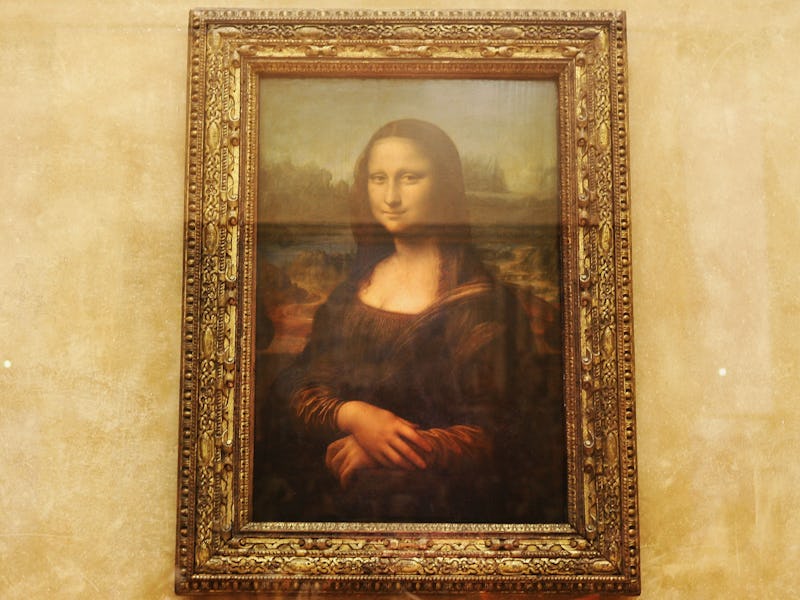How the Real 'Mona Lisa' Was Finally Revealed to the World 10 Years Ago
Leonardo da Vinci painted the picture in the 16th century.

Unlike some legendary works of art, the Mona Lisa has never really been lost. Apart from a couple years in the early 1900s when an Italian patriot stole Leonardo da Vinci’s masterwork from the Louvre, the painting has always been around for people to admire. But 500 years is a long time, and the centuries have inevitably frayed and faded the painting from how it looked when Leonardo first put brush to easel.
This week marks 10 years since French engineer Pascal Cotte turned back the clock on Mona Lisa, revealing the painting’s original form to the world. A pioneering digital restoration technology captured the work in stunning detail using a sophisticated digital camera.
Cotte’s work stripped away centuries of restoration efforts to bring the Mona Lisa to life. Martin Kemp, an expert on Leonardo and emeritus professor of the history of art at University of Oxford, tells Inverse that he still uses the restored version in talks to this day.
“In its reconstructed version is it fresher, more alive and full of space,” Kemp says. “The lakes and watercourses, which are vital to its portrayal of the “body of the earth” stand out clearly when they are really blue. The draperies sing, and the flesh tones glow.”
Cotte used 13 different light wavelengths, as opposed to the three or four captured by regular cameras, to scan the image across multiple spectrums. He was then able to isolate the varnish from the 240-megapixel scan and show the painting as it was when it left Leonardo’s studio.
Tourists admire the Mona Lisa in the Louvre.
“With just one photo you go deeper into the construction of the painting and understand that Leonardo was a genius,” French engineer Pascal Cotte said at the time of the project’s completion.
The scan revealed a number of facts about the Mona Lisa. Two of her fingers changed position during the painting process, for example, and a blanket had faded from view. Cotte spent 3,000 hours over the course of three years, analyzing a scan taken from the Louvre museum in Paris, before revealing his findings at the Metreon Center in San Francisco.
“Above all it gives as an impression that is closer to the original than its present appearance, which is paved with prominent crack patters and masked by discoloured varnish,” Kemp says.
In the years since the scan, Cotte has claimed to find even more secrets. It is generally believed Leonardo painted the Mona Lisa between 1503 and 1517 as a portrait of Lisa Gherardini that her husband had commissioned.
Cotte said in 2015, however, that other portraits lurked beneath the surface. The idea gained little support in the art world. An anonymous art historian said that Cotte “has been spending too much time on Photoshop,” and Kemp described the idea at the time as “not really supportable.”
Perhaps Cotte’s more outlandish ideas help explain why, while his scans of Mona Lisa beautifully restored the painting, the technology has yet to shake the art world to its core.
“Pascal’s algorithms have huge potential for digital restoration on a widespread basis, but I don’t think they have been used outside his own work,” Kemp says.
Nonetheless, the practice of using such high-quality scans to bring a painting to life is an ideal way of restoring it without damaging it in the process — an idea that’s still just as powerful today as it was when Cotte first revealed it 10 years ago.
“Digital restoration can be used for investigation and understanding without any physical intervention in the actual work of art,” Kemp says. “It potentially avoids the actual restoration of works that are in a physically secure condition. It can place the debate about restoration on a different basis.”